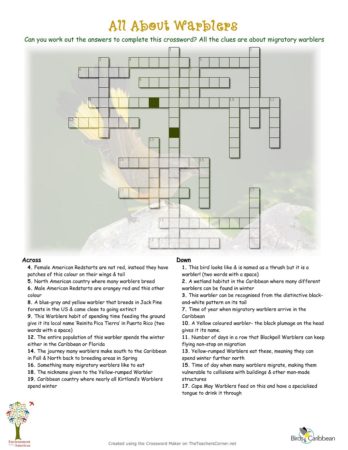Celebrate World Migratory Bird Day (WMBD) with us in our virtual “Birds Connect Our World” edition! Have fun learning about a new migratory bird every day. We have colouring pages, puzzles, activities, and more. Download for free and enjoy nature with your family at home.
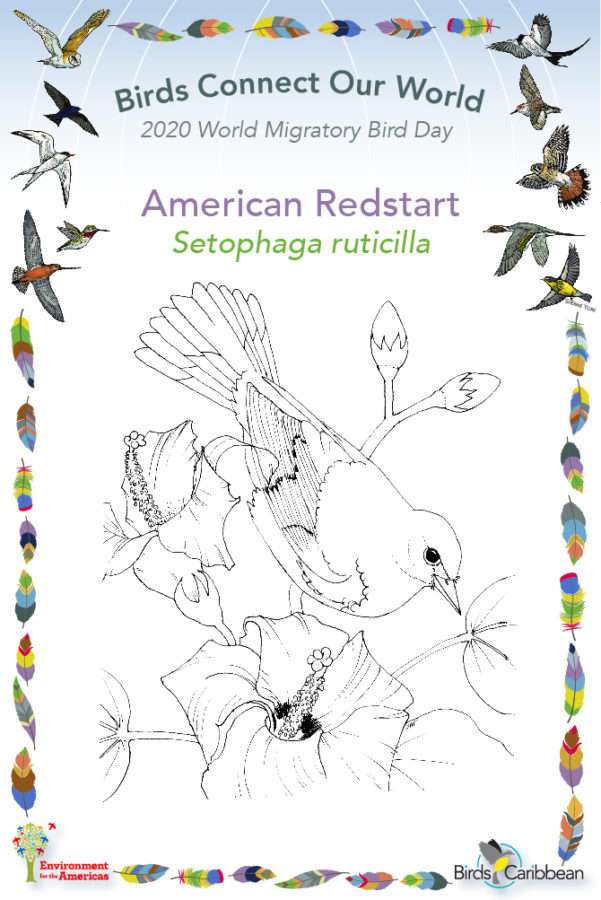
Migratory Bird of the Day: American Redstart
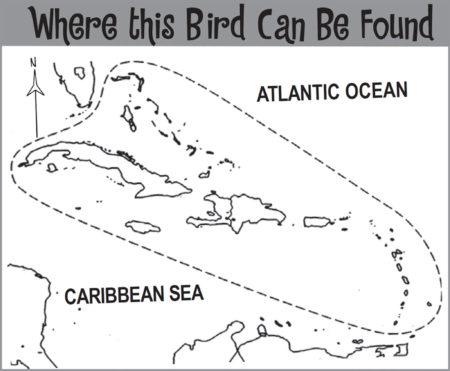
These small, active warblers flit around in trees and bushes giving flashes of their colourful plumage. Males are a striking mix of glossy-black upperparts, head and breast, with large, bright orange patches on the wings, tail and sides. Females and immature males have gray heads, olive-green backs, and yellow patches instead of orange. These lively birds frequently fan and flick their long, colourful tails and wings as they hop about in the foliage.
American Redstarts breed across northern parts of the US and Canada. They are long distance migrants, flying south to winter in Mexico, Central America, northern South America, and throughout the Caribbean. The birds that winter here are most likely to have come from breeding areas in eastern North American. They start arriving in late August and stay until early May.
American Redstarts eat insects, which they glean from leaves, or sally out to catch mid-air. The bright flashes of colour seen as these birds flick and droop their wings and fan their tail flushes insects out into the open, making them easier to catch. The flicking and fanning behavior is also used for communication between individuals.
During the winter American Redstarts can be found in all habitat types—swamps, gardens, mangroves, shade coffee plantations, scrub, woodland, and forests. In coffee plantations, they are known to feast on the borer beetle, the world’s most serious coffee pest, just when the beetles are attempting to invade maturing coffee berries. Research has shown that by helping to control this pest, redstarts increase the profits of coffee farmers in Jamaica by about 12%. American Redstarts are mainly migratory visitors in the Caribbean, but there are a few records of pairs breeding in Cuba! Learn more about this species, including its range, photos, and calls here.
Colour in the American Redstart!
Download the page from Migratory Birds of the West Indies Colouring Book. Use the photos below as your guide, or you can look up pictures of the bird online or in a bird field guide if you have one. Share your coloured-in page with us by posting it online and tagging us @BirdsCaribbean #WMBD2020Carib
Listen to the calls of the American Redstart
American Redstart calls are an emphatic sharp ‘chip’ which they often repeat.
Puzzle of the Day
Click on the images below to do the puzzles. You can make the puzzle as easy or as hard as you like – for example, 6, 8, or 12 pieces for young children, all the way up to 1,024 pieces for those that are up for a challenge!
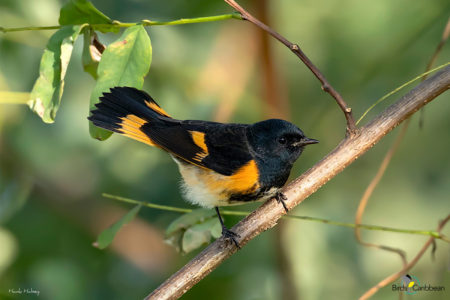
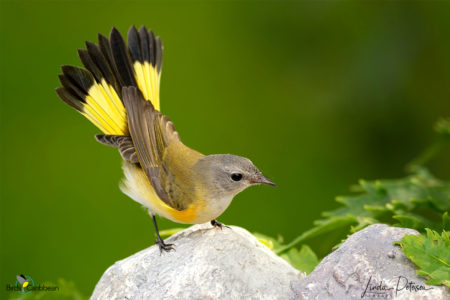
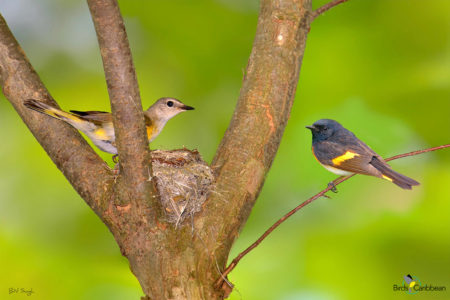
Activity of the Day
FOR KIDS: So far we have met quite a few different types of warblers. How much can you remember about each one? Test your knowledge with our crossword puzzle all about warblers and their migration. If you are not sure of an answer you can check back to previous posts to find the warbler facts . And you can find the answers here.
FOR KIDS AND ADULTS:
- Take a walk and see if you can spot any migratory warblers, look up in the trees to look for any American Redstarts flitting about amongst the leaves. Use a bird field guide or the FREE Merlin bird ID app to help you identify the birds you are seeing.
- Enjoy the videos below of American Redstarts in the Wild! The first shows the male in his striking orange and black plumage. This video features his sweet song that he sings in spring and during the breeding season. In the second you can see a female American Redstart hopping through a mangrove in search of food. Finally the last video shows a Male flicking is tail as he feeds on small insects.
- Visit MigratoryBirdDay.org for many more free activities and resources to learn about migratory birds, their threats and conservation actions you can take.

